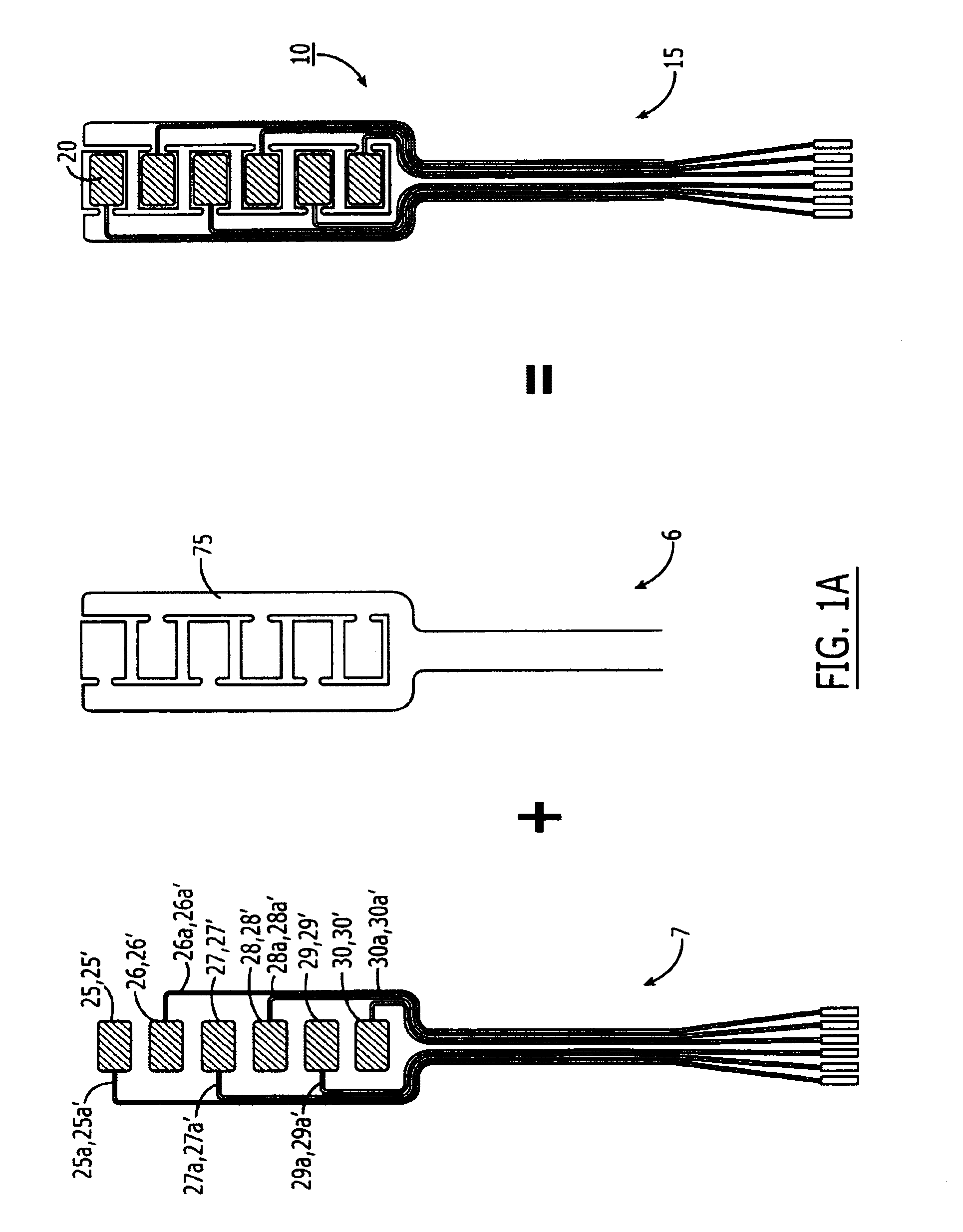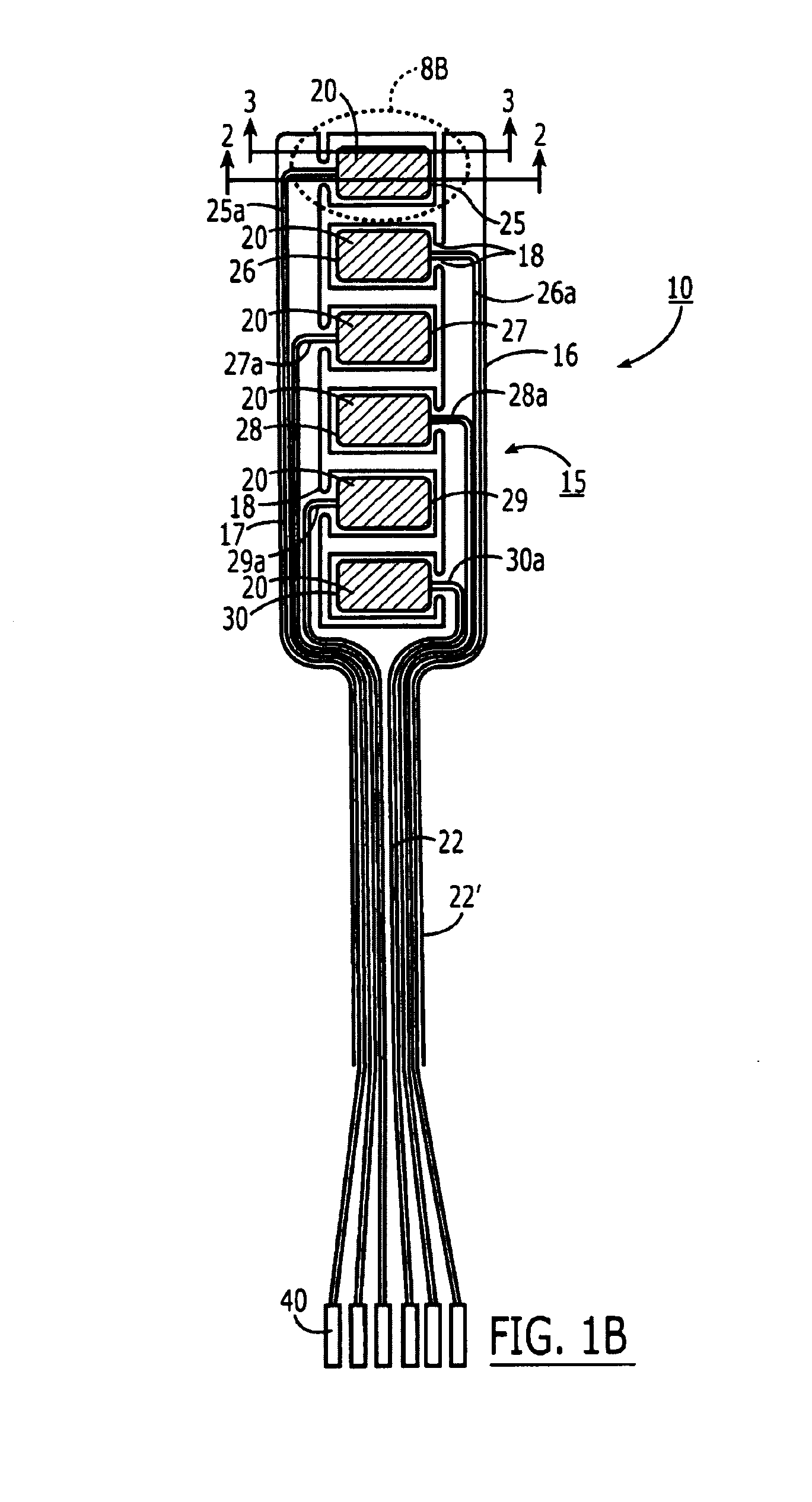Low profile acoustic sensor arry and sensors with pleated transmission lines and related methods
a technology of acoustic sensors and transmission lines, applied in the field of low-profile acoustic sensors, can solve the problems of low sensitivity, poor signal-to-noise ratio (snr) of conventional acoustic sensors, adversely affecting the reliability and/or correlation of detected acoustic signals, etc., to facilitate the flexural response of the sensor, improve the sensitivity of the sensor element, and facilitate the operation of the detection system
- Summary
- Abstract
- Description
- Claims
- Application Information
AI Technical Summary
Benefits of technology
Problems solved by technology
Method used
Image
Examples
Embodiment Construction
[0068]The present invention now will be described more fully hereinafter with reference to the accompanying drawings, in which preferred embodiments of the invention are shown. This invention may, however, be embodied in many different forms and should not be construed as limited to the embodiments set forth herein; rather, these embodiments are provided so that this disclosure will be thorough and complete, and will fully convey the scope of the invention to those skilled in the art. Like numbers refer to like elements throughout. In the drawings, layers or regions may be exaggerated for clarity.
[0069]The present invention relates to a sensor array configuration and components thereof and an associated method for fabricating a sensor array. In the description of the present invention that follows, certain terms are employed to refer to the positional relationship of certain structures relative to other structures. As used herein, the term “longitudinal” and derivatives thereof refe...
PUM
 Login to View More
Login to View More Abstract
Description
Claims
Application Information
 Login to View More
Login to View More - R&D
- Intellectual Property
- Life Sciences
- Materials
- Tech Scout
- Unparalleled Data Quality
- Higher Quality Content
- 60% Fewer Hallucinations
Browse by: Latest US Patents, China's latest patents, Technical Efficacy Thesaurus, Application Domain, Technology Topic, Popular Technical Reports.
© 2025 PatSnap. All rights reserved.Legal|Privacy policy|Modern Slavery Act Transparency Statement|Sitemap|About US| Contact US: help@patsnap.com



